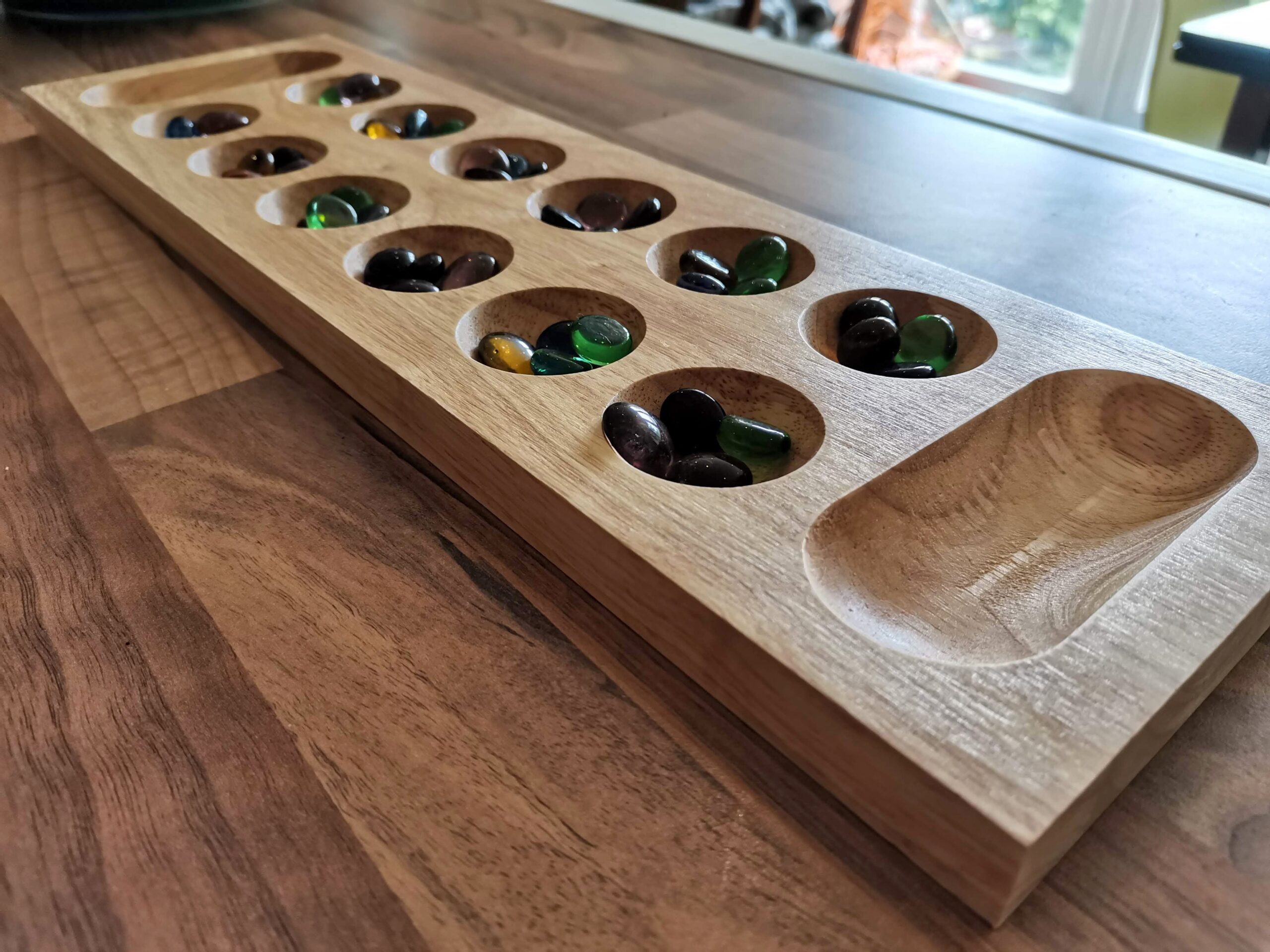Aeon’s End Legacy Review
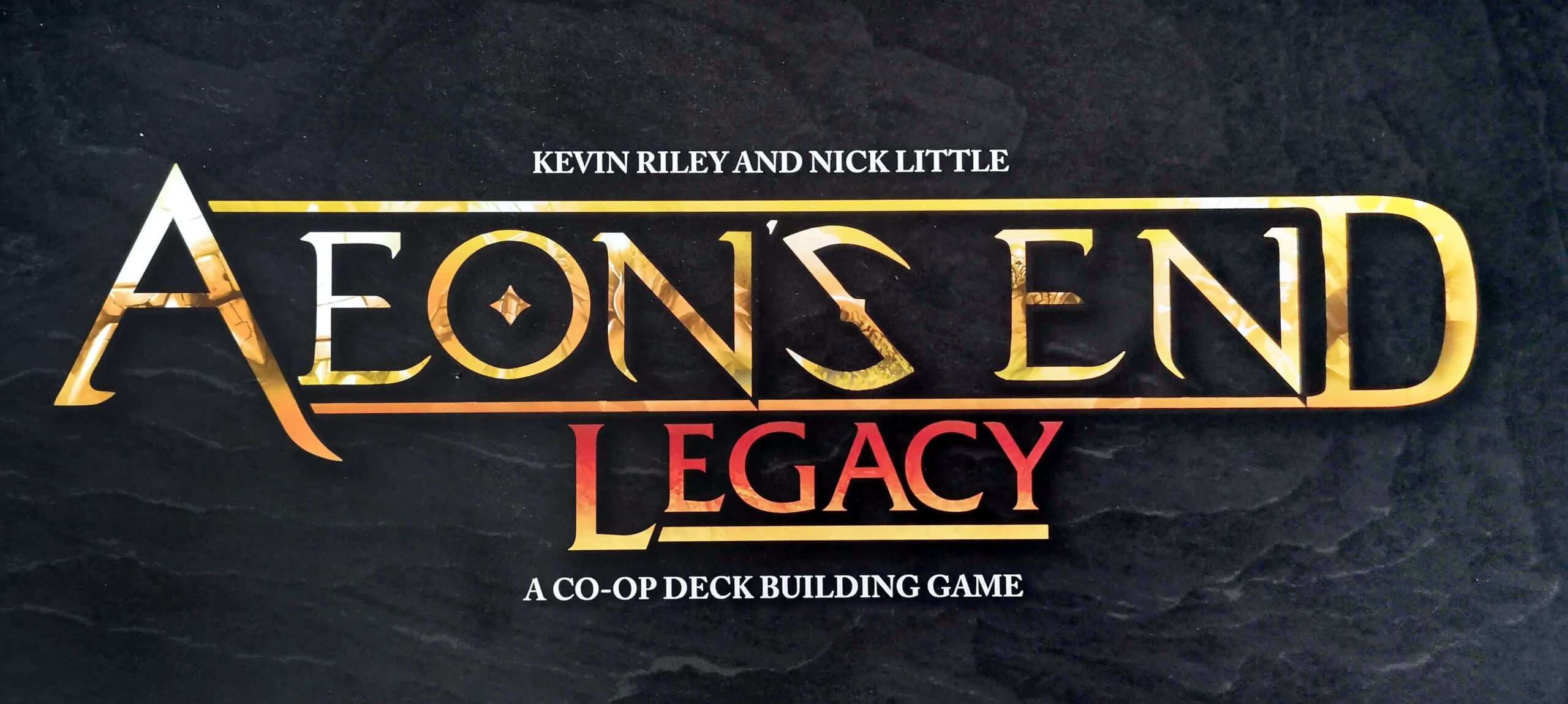
I’m going to preface this review of Aeon’s End Legacy by saying I’ve split it into two sections: a spoiler-free overall run-down, and then a summing-up which will probably have spoilers around the campaign. I’ll try not to spoil too much, but at least you’re warned.
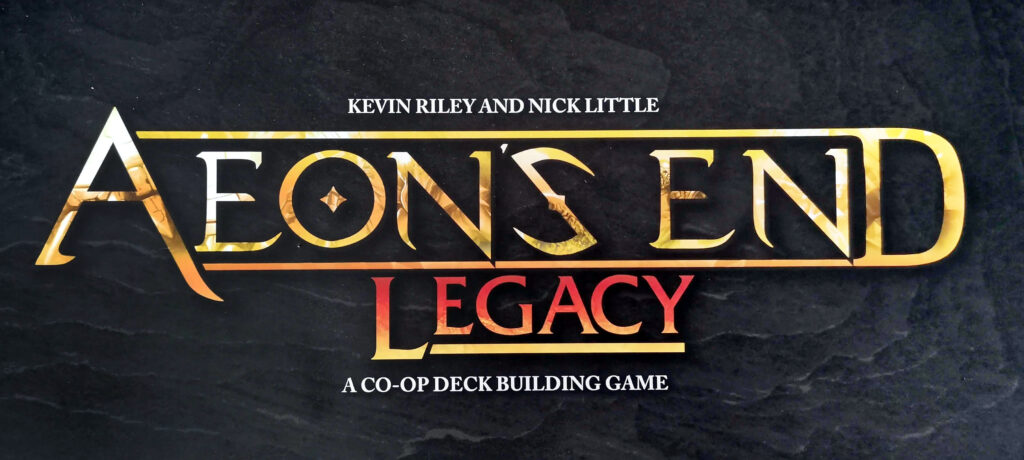
Spoiler-Free Section
Introduction
Designer Kevin Riley gave us the original Aeon’s End game back in 2016. It’s a cooperative fantasy deckbuilding game, in which players combine spells, relics and gems to build a powerful deck, in order to fight legions of evil creatures, and to save your home, Gravehold.
There have been several expansions since, thanks to the game’s popularity and success, and today we’re going to take a look at one of them – Aeon’s End Legacy. The biggest difference between this version and the others in the series is that word on the end of the title, “legacy”.
Legacy games, if you’re not familiar with them, tend to have things happen which permanently change the game as you play. It can be things like stickers or marks on the game board, stickers or writing on cards, changes to the rule book, or even tearing things up and never using them again. Aeon’s End Legacy takes this format and applies it to deckbuilding, so let’s have a look at the game.
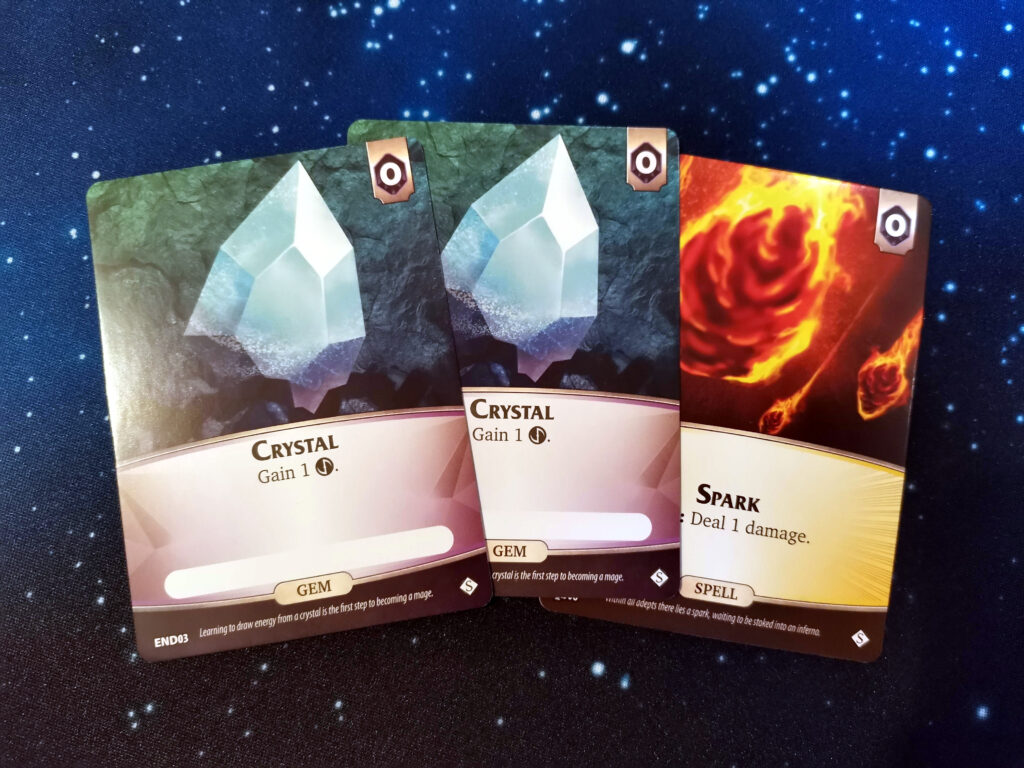
What’s In The Box?
Aeon’s End Legacy comes in a pretty huge box. It’s not going to fit comfortably in your Kallax. I can’t tell you exactly what’s in the box without spoiling some things, suffice to say there are a lot of cards in there, along with cardboard tokens for things like tracking your hit points, and two of the spinner disc devices used for tracking the life of the nemesis you’re fighting, and the home you’re defending.
Along with those sealed decks of cards are a bunch of envelopes, one for each chapter of the game, and a series of Insight boards. The artwork throughout is beautiful, the illustrations are top-notch fantasy fare.
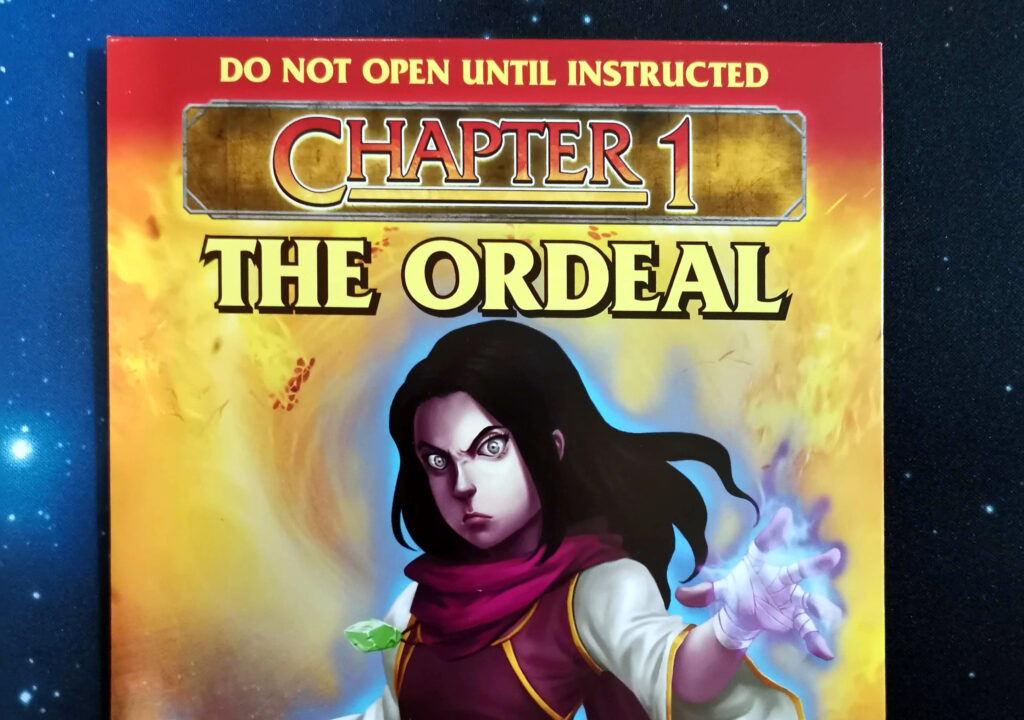
The Insight packs contain the stickers which you’ll be using throughout the game, and the envelopes contain various bits and pieces you’ll need to advance the story and introduce new features and mechanisms,
The cards are really nicely produced, as you’d expect for a game that revolves around playing cards, and the cardboard chits are solid and well-printed. The box also has a great insert, designed for storing everything you need to play, including dividers for the various sets of cards, and some foam blocks to bolster it before it’s full, to keep things in place.
Finally, there are four boxes labeled A, B, C and D. I’m not going to tell you what’s inside them, you’ll just have to find out for yourself.
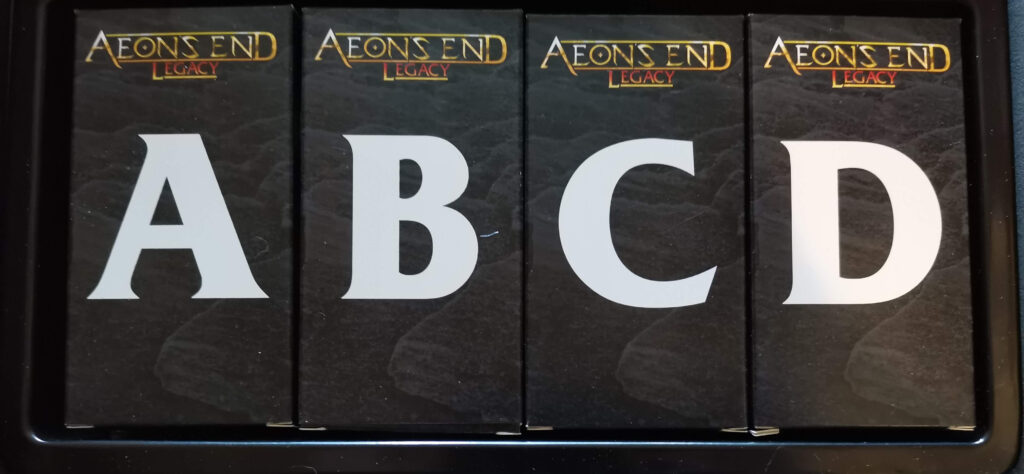
How Does It Play?
Aeon’s End Legacy is designed for 1-4 players. Based on how many people are playing (and it’s highly recommended those same players play every chapter together from start to finish), a turn order deck is constructed and shuffled. Nine piles of supply cards are laid out in a 3×3 grid, the current nemesis and their deck are added to the table and any specific setup instructions followed. Finally, each player draws a hand of five cards from their starting deck, and we’re ready to play.
For each turn, the top card of the turn order deck is revealed. If it’s one of your players, it shows you who gets to play. That person plays the cards in their hand in any order. They can be spells, which are played to prepare them in one of your breaches, and used next turn, relics, which can do things like let you draw additional cards, or gems, which give you aether to spend. Aether is the currency of the game, and can be used for a few different things, the main one being buying new cards from the supply.
After that player’s turn, all the played and bought cards are added to their discard pile, and the order they choose to discard them is important. In most deckbuilders players shuffle their discard pile when their draw pile is empty, in order to create a new draw pile. The Aeon’s End games are a little different in that the discard is never shuffled, just flipped to create a new deck. So if you use a bit of strategy, you can influence the way cards will turn up.
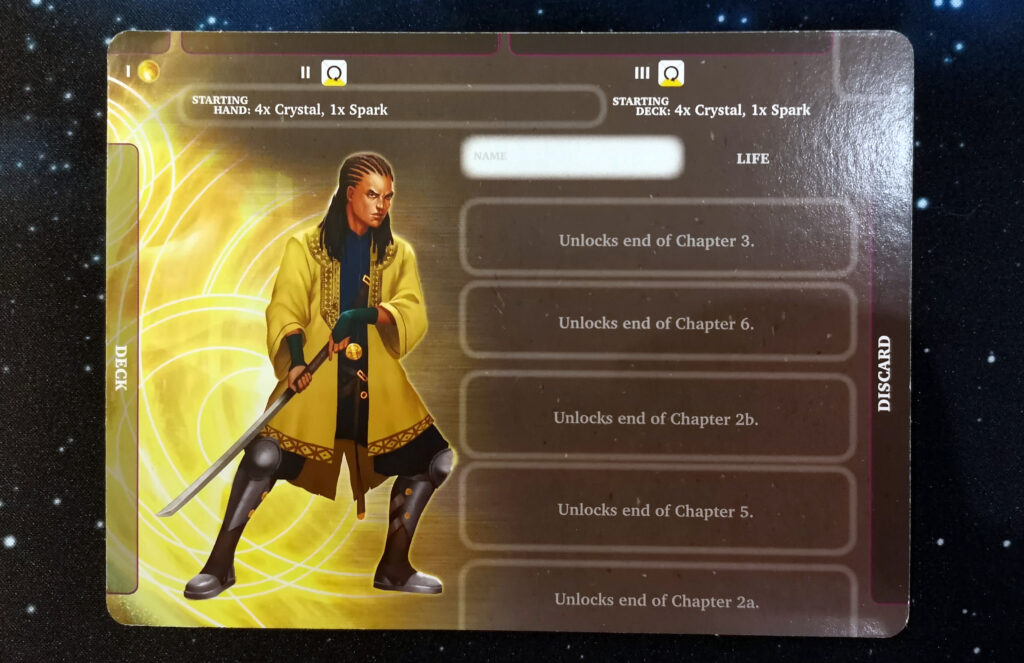
If the turn order card is a Nemesis one, it’s the bad guy’s turn. There might be some persistent effects to resolve from cards already in play, and then a card from the nemesis deck is turned, and its instructions followed. I won’t elaborate much more than that, other than to say it may involve bringing a minion onto the battlefield to fight, or triggering some other kind of event.
What Happens Then?
Play continues until either the heroes or the nemesis wins. Then the players read the next card in the Legacy deck, which drives the story forwards. It might tell them to open an Insight pack and apply some stickers somewhere, or maybe give them an opportunity to change up the cards they’re using each chapter.
Play through the chapters continues like this from the start to the end of the Legacy deck, and the story that goes along with it. There’s quite a bit of tear-down involved at the end of each chapter, so build a little time into your session to see what the outcome is, and to make any changes or choices that might reveal themselves.
In essence, that’s all there is to Aeon’s End Legacy. Build a deck, fight a bad guy, advance the story. But summing up like that does it a real disservice, so let’s take a proper look at what it feels like to play.
Final Thoughts (Spoiler-Free)
I’ve completed the full campaign now, and I have to say I really enjoyed it. The story, considering the fact it’s told through a small amount of text on cards, is really engaging. I was able to invest in the universe more easily, and care about the characters more than in a lot of fantasy novels I’ve read.
I love deckbuilding games, I was hooked from the first time I played Dominion, ten years ago. The feeling of carefully crafting a deck which works to its strengths and makes you feel powerful is a great one. Aeon’s End does it really well, and the theme using spells and powers is great. It feels more dynamic and interactive than something like Dominion, where the deckbuilding is largely passive, without much interaction between players.
I played solo for the campaign, which works in almost exactly the same way as it would for anything up to four players. I really recommend Aeon’s End Legacy for solo players. The way the story changes how you play the way the game changes with every chapter is really good. I can safely say without ruining too much that the way my box, cards and character now will almost certainly be different to anyone else who ventures through the campaign.
I want to mention the fact that I personally found the game pretty easy. However, from reading various forums, it seems like that’s not always the case, in fact a lot of people find it very hard. This isn’t me trying to flex like “I’m so good at this game”, it’s just a case of your mileage may vary. I think it was a combination of having played a lot of deckbuilding games, and also having played the video game Slay The Spire a lot too, which is a digital deckbuilder. I might have gotten very lucky with the choices I made in the game too.
If you enjoy deckbuilding games, Aeon’s End Legacy is a great introduction into the franchise and a solid co-operative game, and if you’ve never played one before but are thinking of trying one, I’d recommend this without hesitation. It teaches the game well, has a great rule book, and has plenty of second chances if you don’t do so well.
If you’ve got a regular small group who like a good story and co-op games, this is a brilliant option. I played through solo, and I’d definitely recommend it to fellow solo players.
Warning: The section below contains spoilers that may spoil your enjoyment of the game.
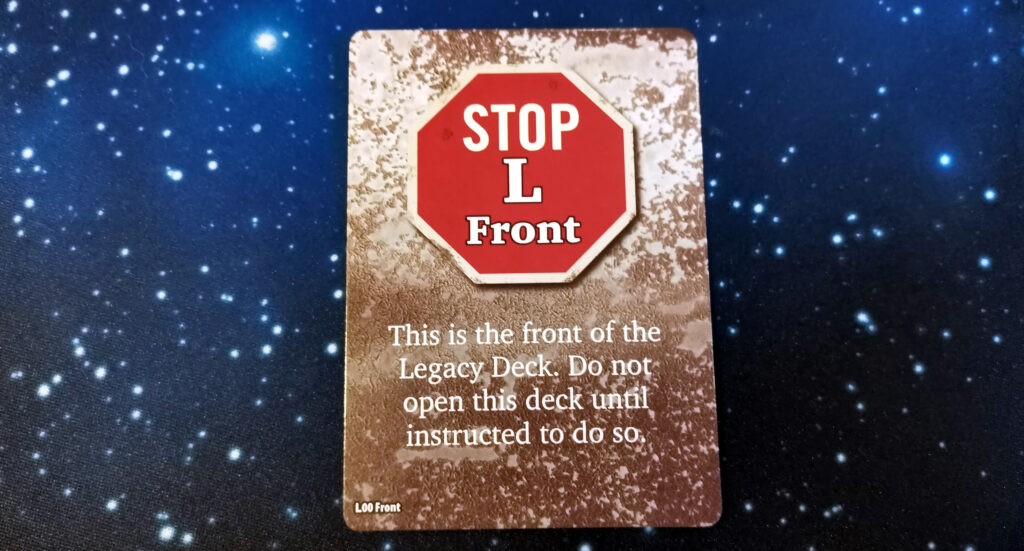
Spoiler Central
What’s In The Box?
So as well as the things mentioned above, there’s plenty to open. The boxes A-D contain new tokens that come into play in certain chapters, and it’s really exciting to be instructed to open one ahead of a new chapter. It’s like a mini Christmas.
The envelopes all contain at least a new Nemesis playmat, a divider for the cards in the box, and sometimes new tokens. The Insight packs have stickers where are for the rule book (usually to show how to use new tokens revealed for the next chapter, stickers for the player board to give you new equipment and abilities, and stickers to alter some of your cards. There are also some stickers which evolve enemy cards into more powerful ones.
My favourite surprise in the box is for the final chapter. When you start the game you can see seven chapter envelopes, but at the end of the seventh it tells you to remove the box insert, and lo and behold, there’s a big final encounter and new cards and playmats. I’ve played the Exit games before which like to tricks like this, but I was genuinely surprised and happy when I found it.
Final Thoughts – Spoiler Edition
I really enjoyed Aeon’s End Legacy. I love how the game reveals new mechanics with each chapter, rather than swamp the player with everything at once. In a game where you can replay each fight ad infinitum it’s fine, but in a legacy game where losses can affect the game negatively, it’s a really good way to break new players in gently. The story also progresses with these changes, so thematically it’s very strong too.
Speaking of story, the story in here is really good. You could quite easily see a blockbuster film being built off the back of it. I felt sad even in the end of the first chapter when one of my comrades died.
I love that each nemesis has its own player board, rules, cards and tokens, even rules of play. It means that subsequent fights aren’t just rinse and repeats of the previous ones, there’s real variety in what’s happening.
The biggest problem, if you can call it one, was for me the game was very easy. I never lost a fight, and only once, very early on did it even feel like I might. I don’t know if that’s a result of me being good at the game (doubtful!), lucky buys in the supply cards which change every chapter, or just the game not being too difficult. Maybe it’s a combination of all three.
Because I found it very easy, I feel like I lost out on a lot of potential game. I never used the cool power that helps you in a re-fight, and I never saw probably half of the enemy cards. That’s not an exaggeration either. In a game that’s one shot and done, it’s a shame, even from the point of view of missing out on a lot of the artwork.
But now that I’ve completed the game, there’s still a lot I can do, despite it being a legacy game. There are instructions for after the end that show how to battle the nemeses again, use randomiser cards to get different supply piles, and how to transport your character and all their unique equipment and abilities to other games in the Aeon’s End franchise.
As I said in the original summing-up above, if you’ve got a regular small group, or love a good solo, don’t hesitate, it’s a fantastic game and great example of the deckbuilder genre.
,







